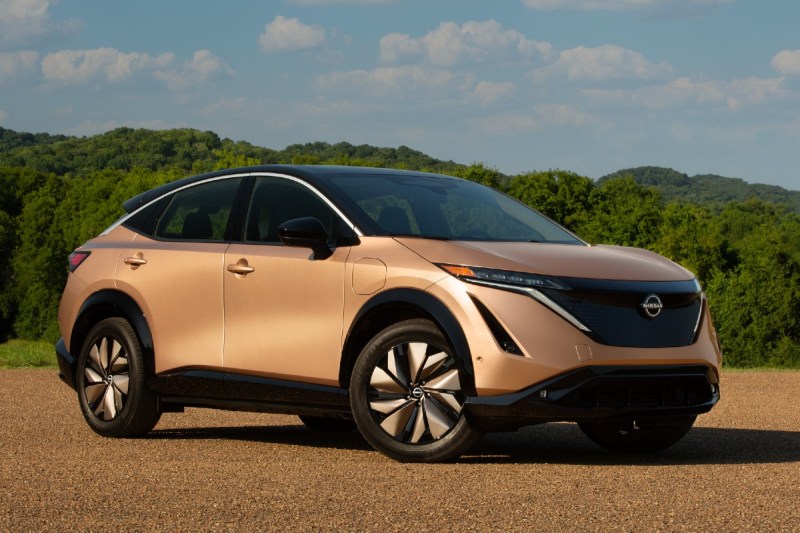In 2010, Nissan introduced the Leaf, the first all-electric vehicle to market, positioning itself as the leader and sole vendor of EVs. A lot has changed since then. While the Leaf remains competitive, rivals across the globe have jumped into the now booming EV market.
It was odd not to see Nissan join its competitors in introducing other hybrid or electric cars over the last decade. That changed last week when the Japanese carmaker leaped into the very crowded EV and hybrid compact SUV market with the 2023 Nissan electric Ariya. The vehicle will compete against current and upcoming electric cars like the Volkswagen ID4, Ford Mustang Mach-E, Tesla Model Y, and other models. What makes it stand out from its peers? Let’s take a look above and under the hood of the new Ariya.

Features of the new Nissan Ariya
The compact crossover is scheduled to arrive in Nissan Motor Co. showrooms in late fall. According to the manufacturer, Nissan Ariya pricing will start at $44,485 for the company’s first new EV in more than a decade, with the top variant beginning at $61,485.
The Nissan EV arrives with six well-outfitted grades, an array meant to meet varying driving styles and financial concerns. Ariya models come equipped with output ratings ranging from 214 to 389 horsepower via either a standard range 63-kilowatt hour battery or an 87-kilowatt hour long-range battery, offering up to 304 miles of range.
In addition to front-wheel drive models, four Ariya options will also be available equipped with e-4ORCE, Nissan’s latest all-wheel drive technology. According to the carmaker, the 100% electric all-wheel drive system “optimizes power output and brakes with exceptional smoothness and stability on nearly all road surfaces with a nearly 50/50 weight distribution.”
The Ariya’s body features a fat front fender framed by super-slim LED headlights, prominent tires, and wheel wells, flared rear fenders, and a steep C-pillar for a stocky compact SUV look. A Nissan “shield” upgrades Nissan’s conventional grille, which is illuminated to reveal Nissan’s V-motion design signature when the ride’s in motion.
Inside the Nissan Ariya
Inside, car buyers will find what looks like luxury quality. This includes several soft-touch materials inside of doors and atop the dashboard. Underneath this dark gray surface is a broad slab of faux wood across the dashboard face. Cushy, contoured seats offer the driver and passenger a 12-inch center display with convenient wireless connectivity with Apple CarPlay, wired Android Auto, and Amazon Alexa available.
A 12-inch Advanced Drive-Assist display highlights a number of premium safety options including ProPilot Assist 2.05, which allows attentive handless driving in certain conditions. The intent is to reduce the driver’s workload in single-lane freeway traffic. A 360-degree camera gives the pilot an unobstructed view of the road while remaining focused ahead. And ProPilot Park gives the Ariya the ability to parallel park and back into spots via one touch of a button.
Like Joe Biden and its competitors, Nissan is diving head first into what the company hopes is a transition into an electric future.
“The Nissan Ariya is an important part of our Ambition 2030 goals to drive electrified mobility for all,” Aditya Jairaj, Nissan’s U.S. director of EV marketing and sales, said. “With Nissan offering an EV option for almost any driver, we’re excited for customers to experience a seamless transition to driving electric.”
The Japanese company will have to somehow extend an American olive branch, however, before Biden will encourage its U.S. sales. The Nissan Ariya will not qualify for a $7,500 federal EV tax credit under new eligibility rules when it launches later this autumn.



